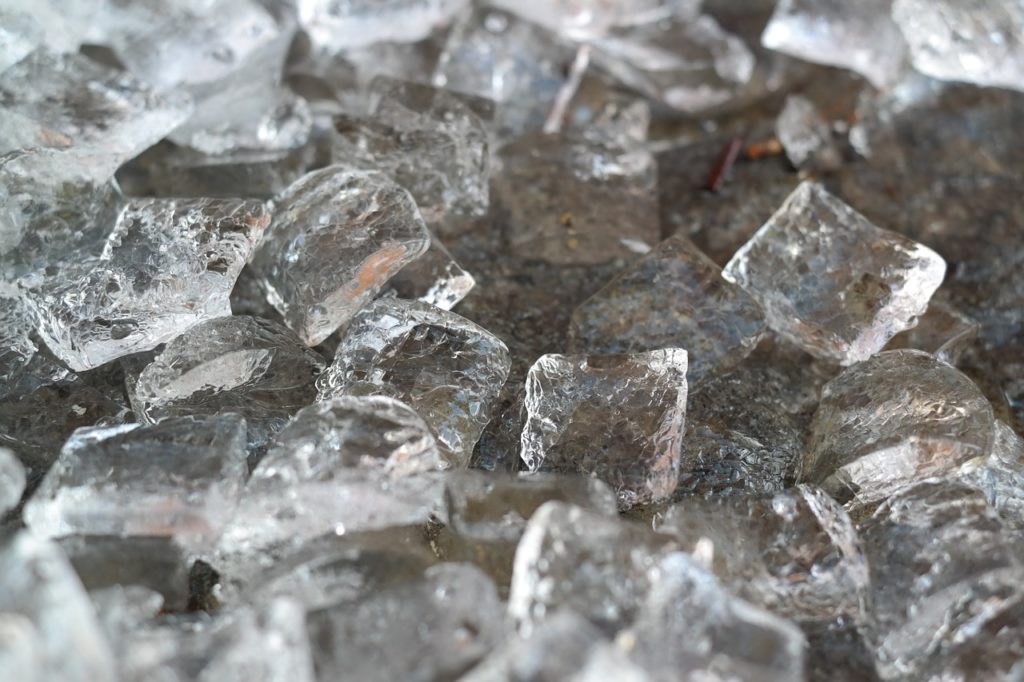This question has crossed the mind of every ice bath enthusiast. Wether you are a Wim Hof Method instructor setting up an ice bath for a workshop, or you are throwing a party and you want your beers at the perfect temperature, this is a crucial question that needs a reliable answer. When it deals with reliability, what’s better than that a good old thermodynamics model? So I dug back into my high school physics classes, more precisely calorimetry.
Here is a little calculator in order to know how much ice you need to add to you water in order to make the perfect ice bath! All you need is to enter the volume of water in your bathtub, the starting and desired temperature. Then, let the equation do the job and you’re ready to chill humans and/or bottles.
Ladies and gentlemen, please welcome the…
Add the ice and it well!!! Keep in mind that this formula will calculate the exact amount to ice which, once all melted in the initial volume of water, will bring the water to the desired temperature. So you may need to increase the amount of ice if multiple bathers are going to enjoy it since each of them will bring some heat in it, especially during hot summer days. If I plan an ice bath for a group of 5-10 clients/friends, I typically put a guesstimated 20-30% more ice cubes than what is calculated.
Bonus : I tested the calculator in real life conditions!
(Spoiler: I am happy with the outcome.)
Want more geekery? Keep reading…
This model assumes that you are preparing your ice bath at an altitude and at an atmospheric temperature where the density of water is 1.0 g/ml. It also assumes that the ice cubes are at 0˚C.
First, this is the energy you need to “remove” from the water to cool it down:
qwater = mwater x C x ∆Twater
where mwater is the mass of water (g), C is the specific heat capacity of water (4.18 J/g˚C) and ∆Twater the temperature variation (Tfinal – Tinitial)
This energy removed from the water is used to melt the added ice. So we have :
qice = n∆Hfusion + mice x C x ∆Tice
qice = (mice x ∆Hfusion)MWH2O + mice x C x ∆Tice
qice = mice x (∆Hfusion/MWH2O + C x ∆Tice)
And:
qice = -qwater
So, you have the following equation:
mice x (∆Hfusion/MWH2O + C x ∆Tice) = – mwater x C x ∆Twater
mice = – mwater x C x ∆Twater / (∆Hfusion/MWH2O + C x ∆Tice)
where MWH2O = 18 g/mol and ∆Hfusion = 6020 J/mol

Sébastien Zappa, PhD
Oxygen Advantage Master InstructorREBO2T – Practitioner
Wim Hof Method Instructor Level 2
ELDOA Practitioner Level 2
Overall Breathing & Cold Geek, Homo cryopulmosapiens…
Happy to coach you since 2018


Hey there! THanks for a great page!
Question: If I were to use plastic ice cubes, ie the ones we can re-freeze over and over, are the calculations the same regarding the cooling effect?
Thank you!
Hey !
Thanks for the kind word 😉
Regarding your question, I am honestly not sure. On the one hand, I would say the calculations still holds for reusable icepacks, since we bring the same “amount of cold” into the water. So the energy transfer should tend to an identical thermal equilibrium. That being said, on the other hand, since the materials are different, and have different calorific properties, it might be different…
you consider it fully melted or during specific time?
or can you answer to this: how much time i need to cool 100 liters of water with 5, 10, 20 kg of ice from 20 celcius to 10 celcius?
Hello,
The tests were done measuring the temperature one equilibrium was reached, i.e. after the ice was fulling melted. This can take some time, depending on the starting temperature contrast. But typically, if you add 10-20% extra ice (to speed up the process and it is always cool to have some ice floating around when soaking 😉 ) and wait 20 minutes, you are good to go in a well-planned ice bath
Cheers,
Sébastien.